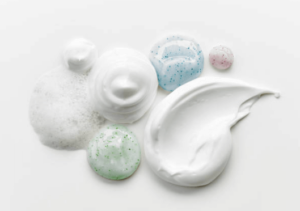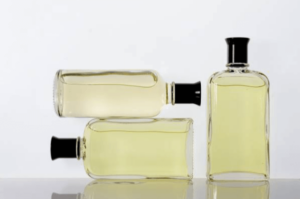Debating the Safety and Impact on Sensitive Skin

In the world of beauty, fragrance has long been an alluring and essential element of personal care products. It’s a sensory experience that can evoke emotions, memories, and even boost our confidence. However, as the clean beauty movement gains momentum, concerns have arisen about the safety and impact of fragrance on sensitive skin and overall health. In this comprehensive blog, we will delve into the role of fragrance in clean beauty, exploring its benefits, potential risks, and the challenges it poses for those with sensitive skin.
Fragrance is a complex mixture of natural or synthetic compounds designed to produce a pleasant scent. In personal care products, fragrances are used to enhance the product experience, mask unpleasant odors of raw ingredients, and create a distinct brand identity.
The aroma of a product can evoke a sense of luxury, relaxation, or invigoration, making it a vital component of skincare, haircare, body care, and cosmetics. However, not all fragrances are created equal. Fragrance is not a single entity but rather a symphony of aromatic compounds carefully blended to produce a particular scent profile. It is an artful fusion of various essential oils, extracts, and synthetic components, each contributing to the final olfactory masterpiece.
Natural Fragrances
Natural fragrances are derived from botanical sources, primarily through the extraction of essential oils. These essential oils are extracted from different parts of plants, such as flowers, leaves, seeds, or fruits, through various methods like steam distillation, cold-pressing, or solvent extraction.
Natural fragrances offer not only delightful scents but also therapeutic benefits. For instance, lavender essential oil is renowned for its calming and relaxing properties, making it a popular choice for products designed to promote a sense of tranquility.
Synthetic Fragrances
Synthetic fragrances, on the other hand, are created through chemical synthesis in a laboratory setting. These lab-produced compounds are designed to mimic the scents of natural ingredients or to create entirely new and unique fragrance profiles.
The use of synthetic fragrances allows for greater control over scent consistency, stability, and longevity. This aspect is particularly valuable in formulating personal care products that maintain their scent throughout their shelf life.
The clean beauty movement is a response to the growing demand for safer, non-toxic, and environmentally-friendly beauty products. Clean beauty advocates prioritize transparency, ethical sourcing, and a commitment to using natural and organic ingredients free from harmful chemicals.
While some fragrance compounds are derived from natural sources like essential oils, others are synthetically produced to mimic natural scents. These synthetic fragrances may contain potentially harmful chemicals that raise concerns among clean beauty enthusiasts.

The Benefits of Fragrance in Personal Care
- Enhancing the Product Experience: Fragrance can elevate the product experience, transforming a simple skincare routine into a spa-like self-care ritual. The right fragrance can boost mood, reduce stress, and create a positive association with the product.
- Brand Identity and Recognition: Fragrance plays a pivotal role in building brand identity and recognition. A signature scent can become synonymous with a brand, evoking emotions and fostering brand loyalty among consumers.
- Masking Unpleasant Odors: In certain formulations, fragrance is used to mask the inherent odor of some natural ingredients. This helps create a more pleasant and inviting product for consumers.
- Emotional Connection: Fragrance has a unique ability to evoke emotions and memories. The right scent can trigger positive emotions and make a product more memorable and cherished by users.
The Risks and Concerns of Fragrance in Clean Beauty
1. Potential Irritation and Sensitivity
One of the primary concerns with fragrance in personal care products is its potential to cause skin irritation and sensitivity. Fragrance is among the most common causes of allergic reactions and skin sensitization. For individuals with sensitive skin, exposure to certain fragrance components can lead to redness, itching, burning, and discomfort.
The complexity of fragrance compositions, whether natural or synthetic, introduces a wide range of chemical compounds that may not be well-tolerated by sensitive skin. Some individuals may be more prone to react to specific fragrance ingredients, making it crucial for clean beauty enthusiasts to be cautious when choosing scented products.
2. Phthalates and Endocrine Disruption
Certain synthetic fragrances may contain phthalates, which are chemicals used to enhance the longevity and stability of fragrance formulations. Phthalates have been classified as endocrine disruptors, meaning they have the potential to interfere with the body’s hormonal system.
The use of phthalates in fragrance has raised concerns about their potential long-term health effects. Research suggests that exposure to phthalates may be associated with adverse health outcomes, including hormone imbalances and reproductive issues. As a result, clean beauty advocates and consumers alike seek fragrance alternatives that are free from phthalates and other endocrine-disrupting chemicals.
3. Formulation Challenges in Clean Beauty
In the pursuit of clean beauty, formulating products with pleasing fragrance can be a challenge. Clean beauty brands prioritize the use of natural and non-toxic ingredients, which can limit the selection of fragrance components. Some natural fragrance extracts may still cause skin reactions in sensitive individuals, and finding alternatives can be difficult.
Clean beauty formulators must navigate the delicate balance between creating appealing scents while avoiding potential allergens and irritants. This balance requires careful consideration of ingredient sourcing, potential allergens, and the desired product experience.
4. Lack of Ingredient Transparency
One of the core principles of clean beauty is ingredient transparency, allowing consumers to make informed choices about the products they use. However, the term “fragrance” on ingredient lists can be vague and misleading. Manufacturers are not required to disclose the specific components of their proprietary fragrances, which makes it challenging for consumers to identify potential allergens or harmful chemicals.
The lack of transparency can create confusion and uncertainty for consumers seeking to avoid certain fragrance ingredients due to allergies or health concerns. Clean beauty advocates emphasize the importance of full ingredient disclosure, encouraging brands to provide clear and comprehensive information about their fragrance formulations.
5. Scent-Free Options for Sensitive Individuals
For individuals with sensitive skin or fragrance sensitivities, finding suitable clean beauty products can be challenging. While some clean beauty brands offer fragrance-free or unscented options, others may still include natural fragrances that could cause irritation.
The demand for scent-free products among clean beauty enthusiasts highlights the need for more extensive offerings that cater to individuals with various sensitivities and preferences.

Navigating Fragrance in Clean Beauty
Fragrance is a captivating element in personal care products that enhances the overall experience and creates an emotional connection with consumers. However, in the context of clean beauty, fragrance can present challenges and considerations that require careful navigation. Navigating fragrance in clean beauty involves understanding ingredient transparency, seeking safer fragrance alternatives, and making informed choices that align with individual preferences and values.
1. Prioritizing Ingredient Transparency
In the quest for clean beauty, ingredient transparency is paramount. Consumers seek clarity and openness about the ingredients used in their personal care products, including fragrance. Clean beauty brands that prioritize ingredient transparency go above and beyond regulatory requirements by providing comprehensive ingredient lists and clear explanations of fragrance compositions.
By knowing exactly what goes into a fragrance formulation, consumers can make informed decisions based on their individual sensitivities and values. Transparent ingredient lists allow clean beauty enthusiasts to avoid potential allergens, harmful chemicals, or specific fragrance components that may not align with their preferences.
2. Exploring Safer Fragrance Alternatives
Clean beauty formulators face the challenge of creating products with pleasing scents while adhering to the principles of clean beauty. As a result, many brands are exploring safer and more sustainable fragrance alternatives to meet consumer demands for non-toxic and environmentally-friendly options.
One approach is to use natural fragrances derived from essential oils and botanical extracts. These natural fragrance sources not only offer delightful scents but also provide additional therapeutic benefits. Lavender essential oil, for example, not only adds a calming aroma but also offers relaxing properties to enhance the overall product experience.
Another option is to opt for phthalate-free synthetic fragrances that are less likely to disrupt hormonal balance. By avoiding the use of phthalates and other potentially harmful chemicals, clean beauty brands can offer fragrance options that prioritize consumer health and well-being.
3. Scent-Free and Unscented Options
For individuals with sensitive skin or fragrance sensitivities, scent-free and unscented options are highly sought-after in clean beauty. These fragrance-free alternatives cater to those who prefer products without added scents or those seeking to avoid potential allergens and irritants.
Clean beauty brands that offer scent-free and unscented options demonstrate their commitment to inclusivity and accommodating diverse consumer needs. These products provide a blank canvas for consumers to personalize their personal care experience or layer with their favorite natural fragrance if desired.
4. Understanding Fragrance Sensitivity
Navigating fragrance in clean beauty also involves acknowledging that individual sensitivities can vary significantly. Some individuals may have heightened sensitivity to certain fragrance components, even when derived from natural sources. Being aware of these potential sensitivities empowers consumers to make choices that prioritize their skin health and comfort.
Clean beauty enthusiasts may experiment with different products and fragrance options to identify what works best for their skin and preferences. Engaging in patch tests or trying sample sizes can help assess skin compatibility and avoid potential adverse reactions.
5. Supporting Ethical and Sustainable Practices
Beyond ingredient safety, navigating fragrance in clean beauty also involves considering the ethical and sustainable practices of fragrance sourcing and production. Consumers increasingly seek products that are cruelty-free, environmentally-friendly, and support fair trade principles.
Clean beauty brands that align with ethical and sustainable fragrance sourcing contribute to a more responsible and conscious beauty industry. Sourcing ingredients from sustainable farms, supporting local communities, and employing eco-friendly production methods showcase a commitment to both consumer well-being and global environmental preservation.
Fragrance in personal care products has a profound impact on the overall product experience, but it also poses challenges and concerns, especially for those with sensitive skin. While some fragrance compounds are derived from natural sources, others may contain potentially harmful chemicals.
The clean beauty movement advocates for safer and more transparent beauty products, but navigating fragrance in this context can be tricky. As consumers, it’s essential to educate ourselves about fragrance ingredients, choose clean beauty brands that prioritize ingredient transparency, and opt for unscented or naturally scented products when possible.
Ultimately, finding the right balance between fragrance and clean beauty is a personal choice. By staying informed and making mindful decisions, we can enjoy the sensory pleasure of fragrance while prioritizing the health and well-being of our skin. The debate over fragrance in clean beauty will continue, but with knowledge and discernment, we can create a beauty routine that enhances our natural beauty without compromising our skin’s health.

